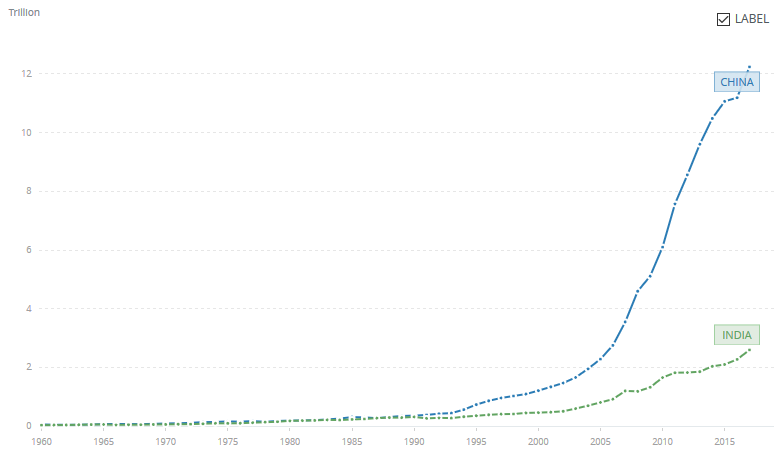In a blog posts on Indian demographics someone asked “The question is why India (per capita income $6,490-2016) is still so poor compared to China (per capital income $15,000 – 2016).” I have never really examined this, but it is an interesting enough question that I wanted to take a further look at it.
In 1960, the World Bank has China’s GDP at $60 billion. India’s GDP at $37 billion. India’s GDP is around 61% of China’s. Considering that India’s population was smaller, they were clearly at similar levels of development. This is, of course, back in the day when China and India were having border fights in the Himalayas (like in 1962).
Over the next couple of decades, India actually closed in on China. In 1970, India’s GDP was 67% of China’s GDP. In 1980 it was 96%. In 1990, they had separated a little with India’s GDP being 88% of China’s. So for three decades they grew at similar rates. And then as you can see rather clearly from the chart below, China’s economy took off.

By the year 2000, China’s GDP was 2.6 times larger than India’s. India was at 38% of China. By 2010, the disparity widened, with China’s GDP now 3.7 times larger than India’s (27%). As of 2017, the disparity continued to grow with China’s GDP now 4.7 times larger (or 21% for India). This is a pretty significant change over time, with clearly most of the difference developing from 1990 to the present. It has been an amazing three decades for China.
Of course, the last time we saw such amazing growth was with Japan up through 1995. Is China growth permanent and sustainable (like U.S. growth tends to be), or is it a bubble?
See:
